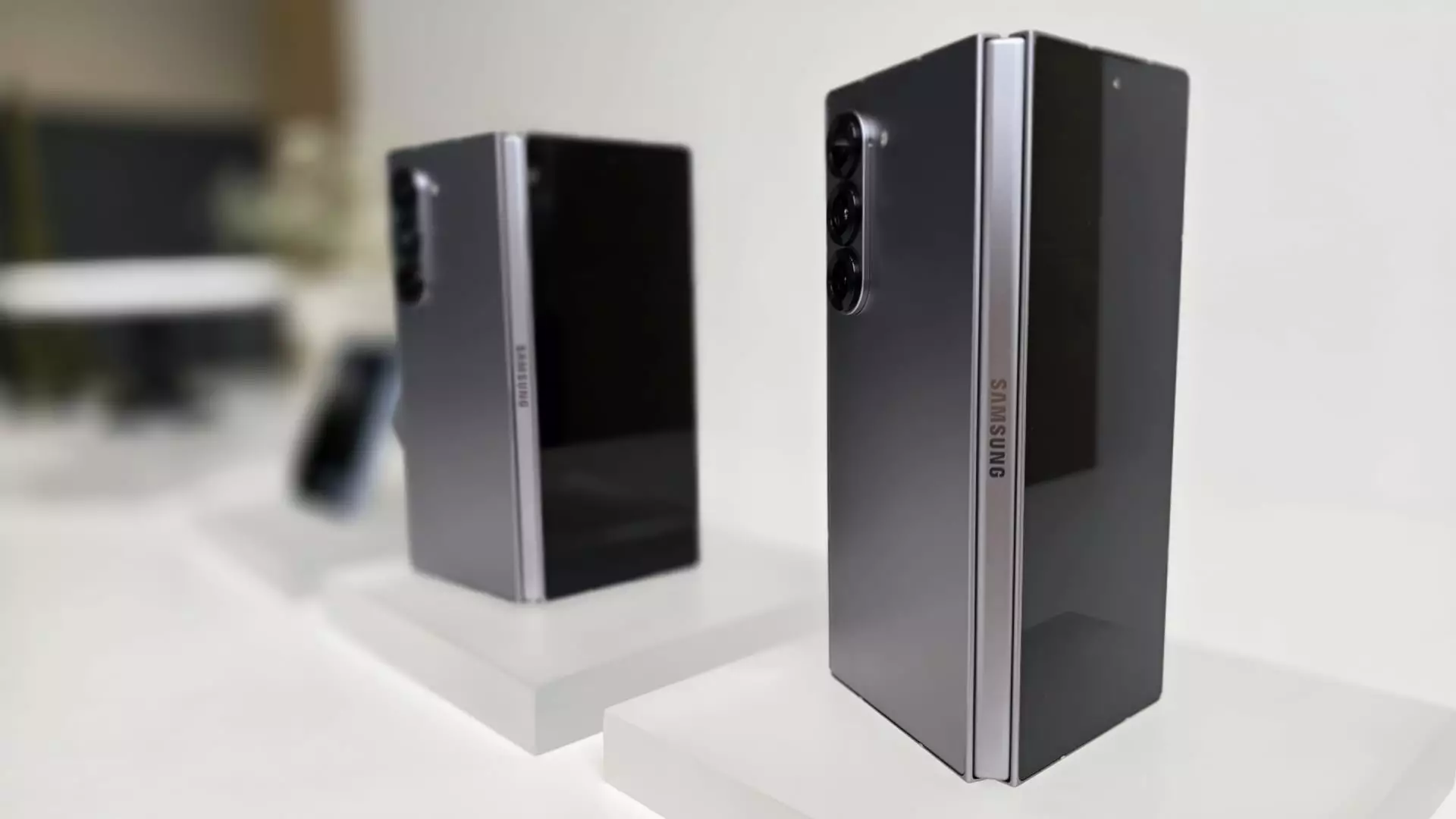In a rapidly evolving smartphone landscape, the cutting-edge technology of foldable smartphones is making significant strides, particularly with a focus on design innovation. Samsung, a technological leader celebrated for its Galaxy series, is preparing to unveil a new iteration of its flagship foldable device next month. This launch isn’t merely a routine update; it signals a major effort to reclaim the lead in an increasingly competitive field dominated by nimble Chinese manufacturers like Honor and Oppo. As consumer expectations grow, so does the emphasis on creating devices that are not only advanced in technology but also slim and lightweight.
Folding phones have broken into the mainstream since their debut in 2019, yet the quest for the slimmest design has become paramount. Ben Wood, chief analyst at CCS Insight, highlights a pivotal trend: “Thinness has become more critical than ever because people aren’t prepared to accept the compromise for a thicker and heavier phone.” The allure of a foldable lies in its ability to offer expansive screen real estate without sacrificing portability. Consumers crave devices that seamlessly blend functionality with sleek aesthetics.
Comparing the Competition
A glance at the stats reveals just how competitive the market has become. Samsung’s Galaxy Z Fold6, while impressive, comes in at a thickness of 12.1 millimeters (0.48 inches) and weighs 239 grams. Meanwhile, contenders like Oppo’s Find N5 have entered the arena with a mere 8.93 millimeters of thickness and a weight of 229 grams, while Honor’s Magic V3 weighs even less at 226 grams and is only 9.2 millimeters thick. Such specifications illustrate the sharp competition where every millimeter and gram count, and underscores the importance of Samsung’s upcoming model.
The implication is clear: Samsung must step up its game. The company’s commitment to innovation is reflected in its marketing for the upcoming foldable, which promises to be “the thinnest, lightest and most advanced foldable yet.” Such bold claims indicate Samsung understands the competitive pressure it faces and is willing to respond with significant advancements in design and engineering.
Market Dynamics and Consumer Adaptation
Despite advances in technology, the foldable smartphone market remains a mere fraction of the overall smartphone landscape. With projections indicating foldables will only account for about 2% of the total market this year, the question arises: why? Consumers have been hesitant to fully embrace the foldable concept. Wood notes that the traditional monoblock phone remains a strong preference for many. Buyers struggle to understand the utility of a folding device over conventional models, even with the added functionality it may offer.
The challenge for companies lies not solely in design innovation but also in shifting consumer preferences. Numerous manufacturers are betting on thinner designs as a potential catalyst to spark interest in foldable technology. A foldable phone that mirrors the usability and practicality of the traditional smartphone could help bridge the gap between the two categories, enticing users to reconsider their choices.
The Role of Major Players
The drama intensifies with the anticipated entry of Apple into the foldable arena, with rumors suggesting a folding iPhone could emerge as early as next year. As a renowned industry giant, Apple’s involvement could either validate the current trend in foldable devices or redefine it entirely. With Apple’s track record of creating highly desirable products, their interpretation of foldable technology might just be what the market needs to reach a tipping point.
Analysts remain split on the bets being placed on foldables. While there is cautious optimism regarding thinner devices leading to heightened consumer interest, it’s equally crucial to recognize the inherent challenges. Many consumers remain indifferent to the need for foldables, underlining that innovative technology must meet tangible needs in the everyday lives of users.
The unfolding scenario is not just about specifications and design but understanding the pulse of customer preferences. As students of technology eagerly await the newest revelations, one thing is certain: the quest for the ultimate foldable smartphone continues—one that harmoniously marries technological prowess with consumer expectations.

